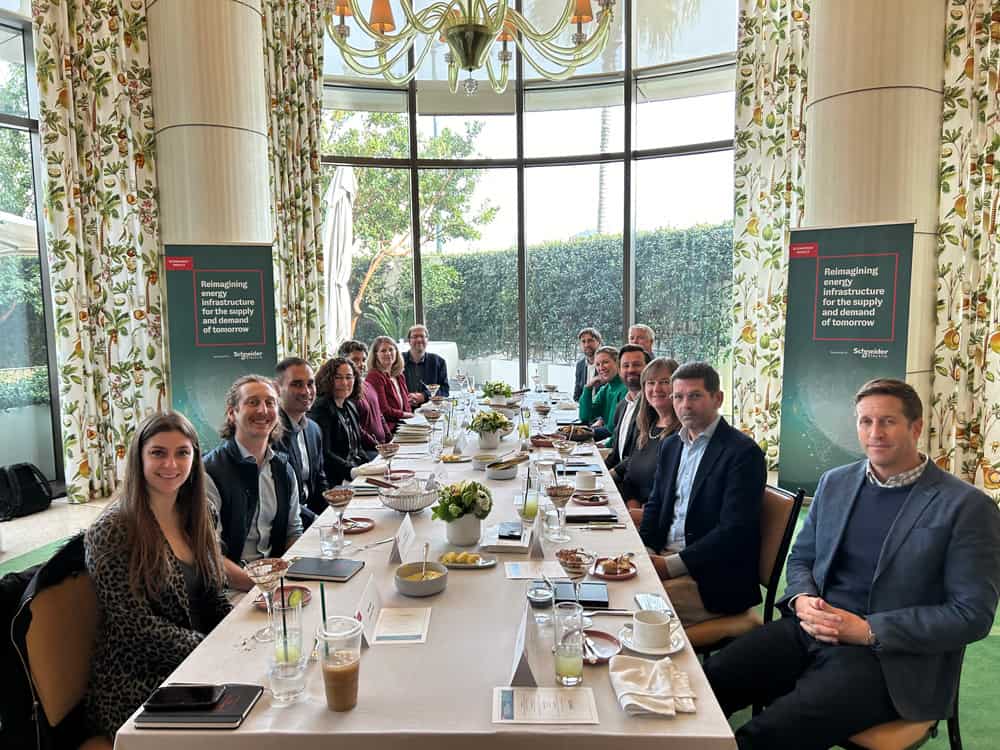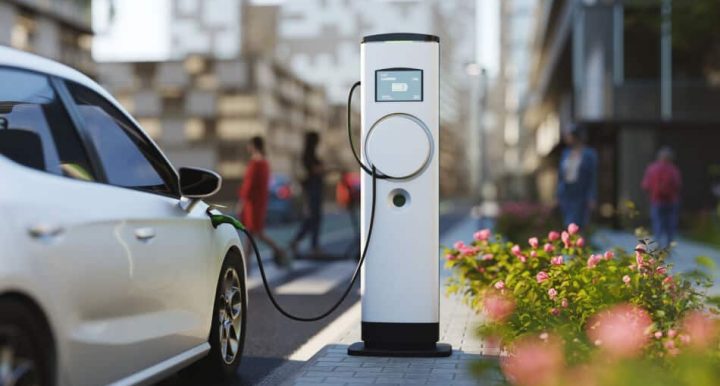One of the most energizing parts of my job is meeting with clean energy leaders to discuss where we are heading as an industry and how we can work together to achieve ambitious decarbonization, electrification, and resiliency goals. Last week, I had the opportunity to sit down with experts from utilities, renewable energy developers, policy groups, technology providers, and end users at The Economist’s Reimagining Energy Infrastructure for the Supply and Demand of Tomorrow roundtable, sponsored by Schneider Electric, in Los Angeles, California.

Over the course of the conversation, we touched on a variety of topics, including the challenges and opportunities driven by the rapid integration of renewable energy resources and grid-scale storage, increasing electric vehicle (EV) adoption rates, growing microgrid deployments, and the role of prosumers in the energy landscape. It was rewarding to participate and learn more about the practical experiences of companies from across the energy value chain. At the end of the day, the transition to clean energy is a team sport, and open dialog is the best way to ensure we make smart policy, infrastructure, and technology decisions that work for everyone across industries and markets.
Here are a few key themes that stuck with me as we went deep on electrification, microgrids, and e-mobility.
Theme 1: Rapid Evolution in Energy Industry Mentality
The U.S. energy grid continues to evolve at a rapid rate. Electrical loads are growing faster than ever. After 20 years of flat demand, analysts predict a 4.7% increase in nationwide electricity demand over the next five years. EV sales exceeded 1.4 million in 2023, a 42% increase year-over-year, contributing to growing demand. At the same time, the rapid proliferation of distributed energy resources (DERs) such as smart thermostats, solar panels, and batteries is introducing new energy supply and demand dynamics across markets. Rising demand coincides with a shift away from traditional coal-fired generation resources, adding further challenges to the energy transition.
In response to these changes, leaders are embracing new ways of thinking about the energy landscape. Instead of planning exclusively around centralized generation, we now need to plan for distributed generation and all the complexities that come with it. Instead of focusing primarily on supply-related grid infrastructure, we also need to develop new ways of managing demand that work for both residential and C&I users. In addition, instead of load-following generation, we need to invest in generation—actual (ideally close to the point of consumption) or virtual—before load comes online.
The good news is that we now have more data than ever to help us better understand energy supply and demand to inform how we invest in infrastructure, whether that entails more physical equipment, new software to support smarter grid orchestration, or expanded demand response (DR) programs and virtual power plants (VPP) that strategically leverage distributed energy resources (DERs). Getting this data to the right people to inform decision-making is another key part of the industry’s evolving capabilities and mindset.
Theme 2: Regulatory Innovation to Support DER Adoption
Innovation often outpaces regulation; we have seen this play out in the clean energy sector as waves of innovation are culminating all at once. While regulatory updates are needed to support new offerings, overhauling regulations can be a slow process. Policies are often implemented at the state level, which means they require complex, multi-stakeholder, long-term processes that can take years to translate statutes into actionable regulations.
Roundtable participants agreed that regulatory innovation has a critical role to play in accelerating DER adoption to bolster our energy infrastructure. For microgrids, new regulations are needed to limit risks, develop more competitive tariffs, and expand eligibility to encourage market participation. Also, while several states have followed California’s lead in passing net-zero emission vehicle standards, additional regulations are needed to accelerate EV manufacturing, ensure equitable access to EVs, and build out charging infrastructure to support a mass transition to hybrid and electric vehicles.
Theme 3: “Patient Capital” Required for Clean Energy Advances
To reinvent our energy infrastructure, we need to start investing in the future grid today. Patient capital—investments that involve higher risk and longer timeframes for returns—was another theme surfaced by roundtable participants as a requirement for rapid decarbonization. Whether sourcing external funding for energy-as-a-service projects or allocating committed budgets toward utility T&D upgrades, the industry needs to take a long view of investments and profits.
To support continued patient capital investments, we can pull both policy levers and deal structuring levers. On the policy side, lawmakers can set aside patient capital through programs like Title 17 Clean Energy Financing to pay for projects that introduce innovative energy technologies. On the deal structure side, we can explore new ways of combining capital, loans, leases, and tax credits to create favorable investment terms that also support the longer development cycles typical of many clean energy projects.
Theme 4: Structures for Equitable Prosumer Engagement
The final theme that recurred throughout the discussion was developing structures that ensure prosumer equity in the transition to clean energy. While higher-income households and large C&I customers have been at the forefront of adopting bigger-ticket DERs like solar panels, batteries, EVs, and microgrids, the group recognized that we need intentional planning to bring everyone along for the ride. California recently took steps to reduce net metering compensation with new tariff NEM 3.0 to address concerns that all ratepayers are subsidizing those with rooftop solar installations. While the impact of this intervention is not yet known, it does demonstrate a willingness by regulators to remain agile to achieve target outcomes.
Another piece of the puzzle is reducing complexity for end users. We need to design programs that are simple and cost-effective to drive widespread consumer participation. As one participant stated, customers want an “easy button” when it comes to clean energy adoption. The simpler we can make DER adoption and participation in DR programs that leverage these assets, the better.
Another key factor is optimizing infrastructure investments to support communities of all shapes and sizes. For example, if we want to accelerate EV adoption across entire communities, we need to build charging stations that are fast and easy to access for people who live in rental apartments or other multi-tenant buildings, or who cannot afford a home charger.
Building Toward a Brighter Future
While there is a lot of work to do to make our net-zero goals a reality, I was encouraged by the open and lively conversations during the roundtable. When energy leaders come together across public and private sectors, industry focus areas, and regions to have frank discussions about the challenges and opportunities ahead, we can make smarter infrastructure decisions that help us build a resilient, future-proof grid that benefits everyone.




